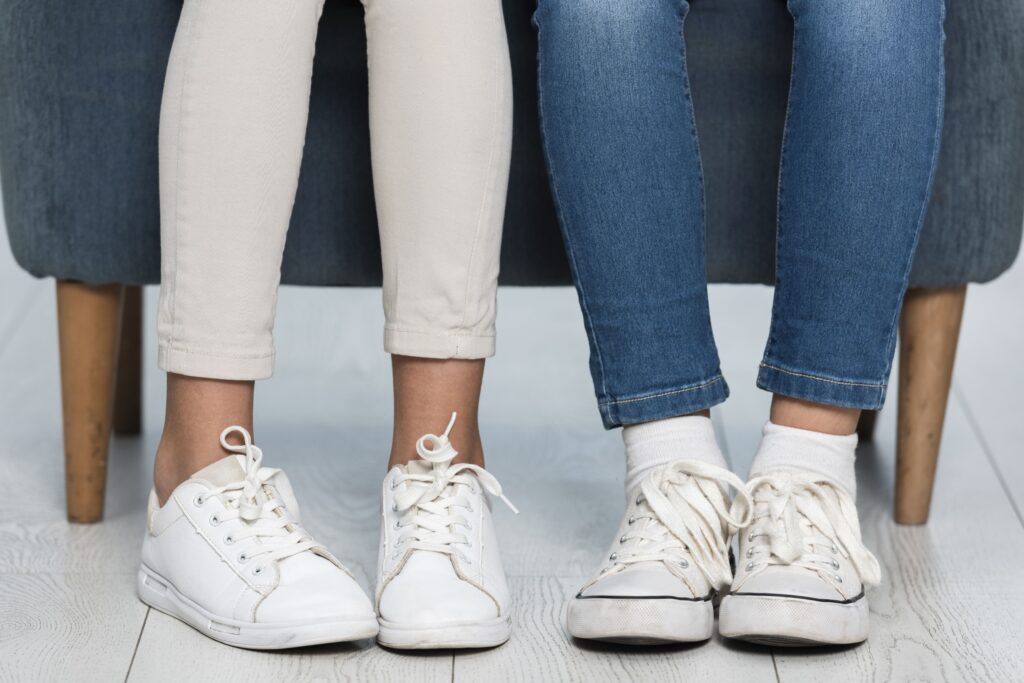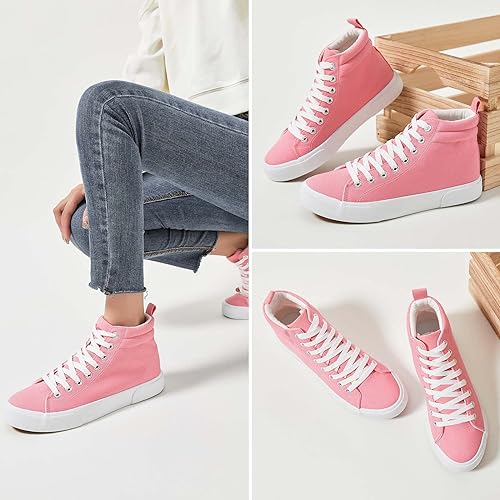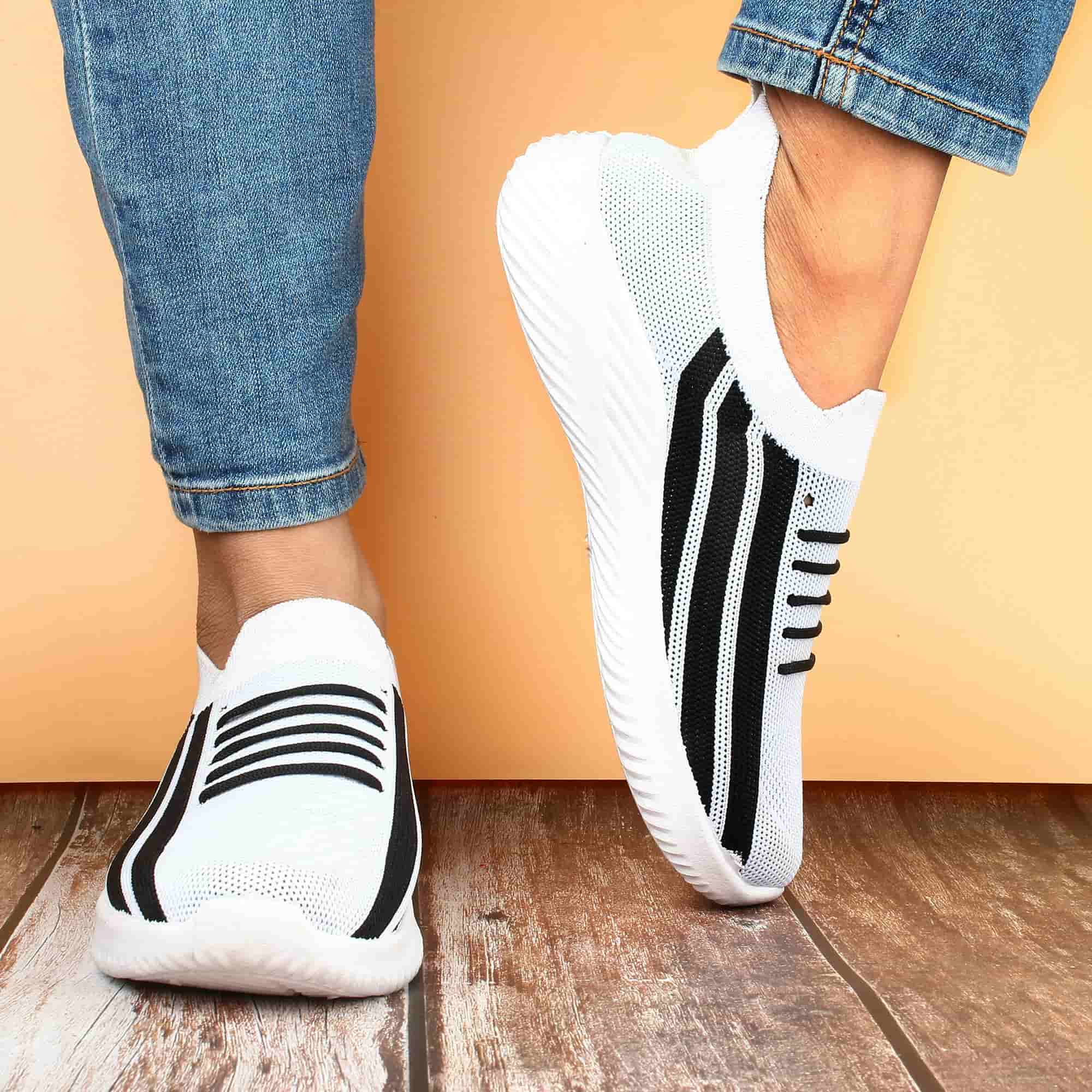To explore the best Shoes for Flat Feet is not as easy as we think. There are many factors that we have to keep in mind. For individuals with flat feet, finding the right shoes can be crucial for comfort and support. According to Run Repeat, the best running shoes for flat feet are selected based on extensive wear and lab testing
The top pick overall is the Brooks Adrenaline GTS 23, which offers rock-steady cushioning and guiding systems to provide the ultimate support for flat footers. Its massive platform disperses the impact of each landing evenly, and the guide rails surrounding the heel effectively prevent excessive rolling inward.
When choosing shoes for flat feet, it’s essential to consider the heel-to-toe drop, as most running shoes have a heel drop of 8 mm or more, favoring a heel-striking pattern. Midfoot and forefoot strikers with flat feet can also find suitable shoes with a lower drop.
Additionally, the right size and fit are crucial, as flat feet require more love and care, and measuring foot length is recommended. For walking shoes, RunRepeat recommends the Sketchers Arch Fit as the outstanding pair for flat footers on a budget.
The guide covers the best walking shoes for flat feet, including options for those with flat and wide feet, or those looking for a lightweight shoe. Amazon offers a wide range of shoes for flat feet, including orthotic insoles and arch support shoes from brands like PROFOOT, FitVille, and ASICS. These shoes are designed to provide support and relief for flat feet, plantar fasciitis, and heel pain.
In summary, the best shoes for flat feet prioritize support, cushioning, and a comfortable fit. Whether for running or walking, selecting the right shoe can make a significant difference in comfort and performance.
Table of Contents

What is Flat Feet?
Flat feet, also known as fallen arches or pes planus, is a condition where one or both feet have little to no arch, causing the feet to lie fully flat on the ground. This can impact a person’s posture and lead to pain and discomfort in the feet, legs, and sometimes the back
Flat feet can develop in childhood and persist into adulthood, with two main types: flexible flat foot, more common in children, and rigid flat foot, often associated with an underlying medical cause in adults. Diagnosis of flat feet can be done by observing the feet when standing, walking, or sitting, and in some cases, through imaging tests like X-rays or scans. Treatment for flat feet is typically only necessary if they cause discomfort or pain, involve an underlying disorder, or lead to issues elsewhere in the body.
Nonsurgical treatments like orthotics, special shoes, calf muscle stretches, and sometimes surgery for severe cases can help manage symptoms and improve foot function. Flat feet can be a common and usually painless condition, but in cases where pain or walking problems arise, seeking medical advice is recommended. Most cases of flat feet do not require treatment, but for those experiencing pain, various interventions can provide relief and improve foot function.

Criteria to choose Best Shoes for Flat Feet.

When choosing shoes for flat feet, there are several important criteria to consider:
Arch support:
Look for shoes with built-in arch support or the ability to accommodate custom orthotics. Proper arch support helps prevent excessive pronation (inward rolling) of the feet
Cushioning:
Shoes should have adequate cushioning in the midsole to absorb shock and reduce stress on the feet and joints. Look for shoes with a firm, supportive midsole
Heel support:
A sturdy heel counter helps stabilize the rear foot and prevents excessive motion. Shoes with a deep heel cup provide extra support
Flexibility:
While the sole should be firm, the shoe should still allow for natural foot flexion. Avoid overly rigid shoes
Toe box:
There should be enough room in the toe box to allow for natural toe splay and prevent crowding of the toes
Lightweight:
A lightweight shoe reduces weight and pressure on the feet
Removable insole:
Shoes with removable insoles allow for the use of custom orthotics or replacement with more supportive insoles
Fit:
Shoes should fit snugly in the heel and midfoot while providing enough room in the toe box. A good fit is essential for support and comfort.
By considering these criteria and trying on shoes to assess comfort and support, individuals with flat feet can find shoes that provide the necessary stability and cushioning to minimize discomfort and prevent further foot problems.
Different types of shoe inserts for Flat Feet

For individuals with flat feet, there are various types of shoe inserts that can provide support and relief. These inserts can be categorized based on their design, materials, and specific features:
Orthotic Inserts
Orthotic inserts are designed to provide biomechanical arch support and a stable heel cup
. They are often recommended for flat feet as they help align the foot into an optimal position, reducing foot pain and discomfort.
Arch Support Insoles
Arch support insoles are specifically designed to support the arch of the foot, which is typically lacking in individuals with flat feet. These insoles can be firm or soft, depending on the individual’s needs, and are often recommended for people with flat feet to reduce pain and fatigue.
Cushioning Insoles
Cushioning insoles are designed to provide extra comfort and shock absorption. While they may not offer the same level of arch support as orthotic or arch support insoles, they can still be beneficial for individuals with flat feet who need additional cushioning.
Custom Insoles
Custom insoles are molded to meet the unique shape of an individual’s foot. They can be more expensive than over-the-counter options but offer a tailored fit and support.
Insoles for Specific Activities
Some insoles are designed for specific activities, such as running or hiking. These insoles often provide additional support and cushioning to meet the demands of the activity.
Insoles for Plantar Fasciitis
Insoles for plantar fasciitis are designed to provide additional support and cushioning for the heel and arch, which are common areas of pain for individuals with plantar fasciitis.
Insoles with Deep Heel Cups
Insoles with deep heel cups are designed to cradle the back of the foot, providing additional support and stability. They are often recommended for individuals with flat feet who need extra support in the heel area.
Insoles with Reinforced Arch
Insoles with reinforced arches are designed to provide targeted support to the arch of the foot. They often feature sturdy materials, such as cork, to provide additional stability and support.
Memory Foam Insoles
Memory foam insoles are designed to conform to the shape of the foot over time, providing a customized fit. They can be beneficial for individuals with flat feet who need a comfortable and supportive insole.
Odor-Resistant Insoles
Odor-resistant insoles are designed to reduce moisture and odor buildup. They are often recommended for individuals who engage in high-impact activities or have sweaty feet. When choosing a shoe insert for flat feet, it’s essential to consider the individual’s specific needs, including the level of arch support required, the activity or activities they will be engaging in, and their personal comfort preferences.
Best Shoe Brands for people with severe Flat Feet.

Based on the information provided in the sources, the best shoe brands for people with severe flat feet include:
Brooks:
Brooks Adrenaline GTS 23 is recommended as the best overall walking shoe for flat feet It offers reliable stability, supportive cushioning, and a comfortable fit, making it an excellent choice for individuals with flat feet.
Dansko:
Dansko Pace Walking Shoe is highlighted as the best women’s overall walking shoe for flat feet
It provides stability, cushioning, and a comfortable fit, making it a top pick for those with flat feet.
Orthofeet:
Orthofeet Coral Stretch Knit Shoe is recognized as the best option for wide flat feet
It offers a wide toe box and excellent support, catering to individuals with flat feet who need extra room and support.
ASICS:
ASICS Gel-Kayano 30 is recommended as the best choice for overpronators with flat feet
It provides the necessary support and stability to address overpronation, a common issue for individuals with flat feet.
Vionic:
Vionic shoes are designed by a podiatrist and are known for their supportive features, including arch support, stability, and cushioning
They are recommended for individuals with foot issues, including flat feet and plantar fasciitis.
Superfeet:
Superfeet Green High Arch Orthotic Support Insoles are highlighted as a top choice for insoles for flat feet, offering a deep heel cup and a semirigid design for stability and comfort
Walkomfy:
Walkomfy Flat Feet Arch Support Insoles are recommended for their unique design that stabilizes and aligns the foot, providing targeted support to different areas of the foot, including the arch and heel
These brands offer a range of shoes and insoles specifically designed to provide the necessary support, stability, and cushioning for individuals with severe flat feet, helping to alleviate discomfort and promote proper foot alignment.
Best Running Shoes for Flat Feet.
Based on the sources provided, the best running shoes for flat feet in 2024 include:
Brooks Adrenaline GTS 23:
Recognized as the best overall running shoe for flat feet by Runner’s World and Shape, the Brooks Adrenaline GTS 23 offers supportive cushioning, a stable design, and is available in wide and extra-wide sizes
Nike Pegasus Trail 5:
Recommended as one of the best running shoes for flat feet by Popsugar, the Nike Pegasus Trail 5 is designed for outdoor adventures, featuring an ultra-responsive midsole and engineered mesh for stability and breathability
New Balance Fresh Foam X 860v13:
Noted as one of the best cushioned running shoes for flat feet by Verywell Fit, the New Balance Fresh Foam X 860v13 provides stability and cushioning to support flat feet during walks or runs
These top picks offer a combination of stability, cushioning, arch support, and comfort, catering to the specific needs of individuals with flat feet. Whether for road running, trail running, or walking, these shoes are designed to alleviate discomfort, promote proper foot alignment, and enhance the overall running experience for individuals with flat feet.
Insoles for Flat Feet
The best insoles for flat feet cater to specific needs, providing support and comfort. Here are some key points from the sources provided:
Superfeet Green High Arch Orthotic Support Insoles:
These insoles are recommended for their semi rigid design, deep heel cup, and support for flat feet. They are approved by the American Podiatric Medical Association (APMA) and offer a firm level of cushioning.
Walkomfy Flat Feet Arch Support Insoles:
Known for stabilizing and aligning the foot, these insoles feature a unique design with reinforced arch support and memory foam for added comfort. They target different areas of the foot, providing shock absorption and sweat absorption.
Comfort and Supportive Walk Hero Insoles for Plantar Fasciitis:
These insoles offer extra cushioning and shock absorption through the heel, making them beneficial for individuals with flat feet and plantar fasciitis. They provide support and comfort for long-term wear.
When selecting insoles for flat feet, it’s essential to consider features like a deep heel cup, rigidity for support, and overall comfort. Insoles with the right design and materials can help alleviate foot pain, provide stability, and improve foot health for individuals with flat feet.
